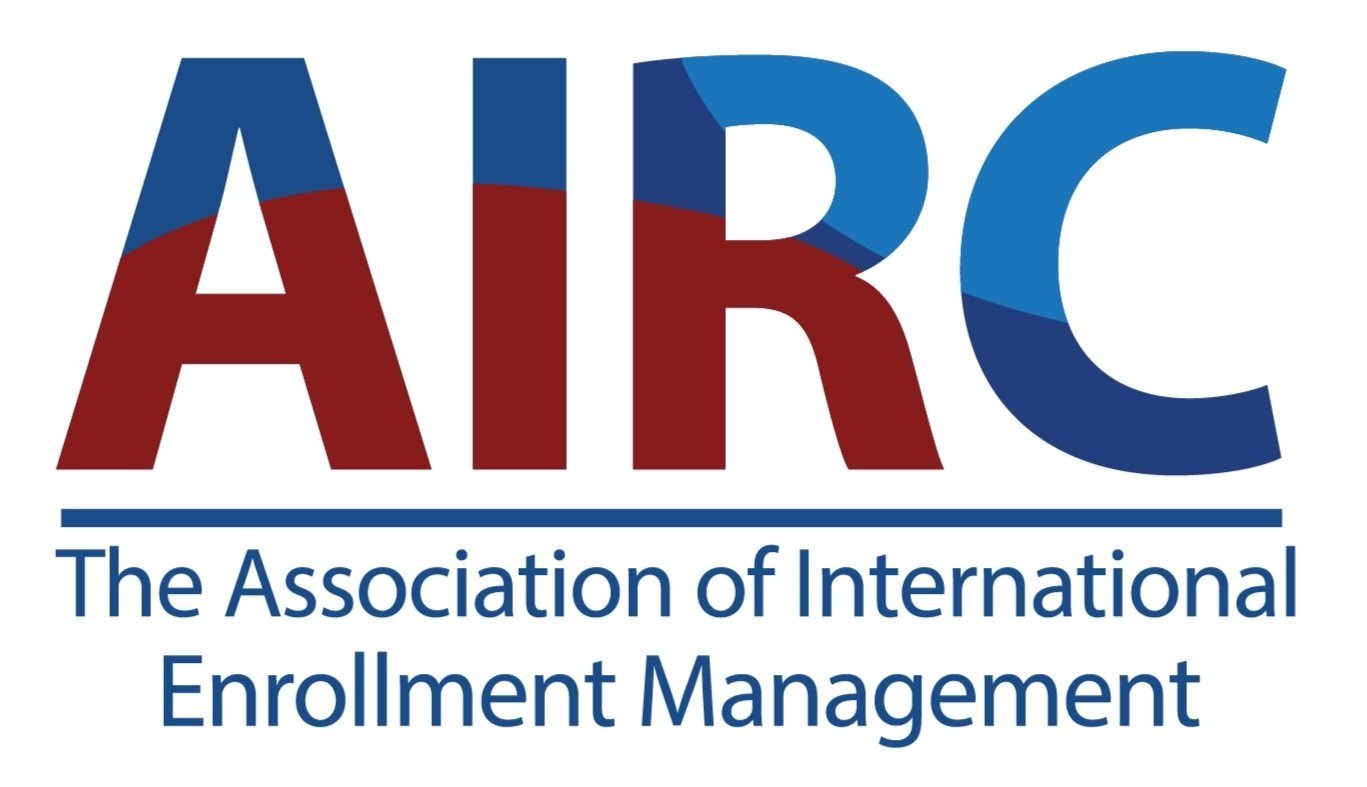Goal 4. Collect and analyze data that maps the state of the international enrollment management field and provides information to assist members to meet their goals.
Metric: Number of data collection projects. Member survey to evaluate value and relevance.
Actions
A. Draw on AIRC’s agency members to provide market intelligence research.
B. Conduct an annual survey of international students (“AIRC Student Pulse”) that provides information useful to educational agencies, institutions and the field.
C. Conduct annual survey all AIRC members to map the state of the IEM field.
D. Deliver regular “AIRC Data Insights” via webinars and through top-level infographics.
E. Leverage partnerships with other international education associations and organizations to conduct and publish surveys that provide useful information to AIRC members.
Goal 5. Develop and enhance member benefits for higher education members to assist them to achieve their goals.
Metric: Increase in the number of higher education members by 10% each of the next five years. Achievement of a retention rate of >90%.
Actions
A. Increase membership to expand and deepen expertise to serve AIRC’s community of practice.
B. Partner with other higher education associations that intersect with IEM (eg. URMIA, NACUBO, NACUA) to deliver expert programming that serves members.
C. Create an “AIRC Guide to U.S. Educational Opportunities” to promote the variety of educational opportunities and pathways available to international students.
D. Develop “Recognized for Meeting Standards” assessment and recognition program for institutional members.
E. Conduct targeted outreach to regional international education groups by offering to present AIRC content (ie, survey results, resources) as part of their meetings to demonstrate the value of AIRC membership.
F. Partner with associations such as the Community Colleges for International Development (CCID), the Association of Public and Land-grant Universities (APLU), and others to attract more institutions to join AIRC.
G. Develop effective ways for institutions to arrange communications and meetings with certified educational agencies.
H. Attract new institutions by convening the annual conference in targeted cities to make it easier for institutions to attend, sponsor the conference as “host institutions,” and have opportunities to meet with educational agencies.
Goal 6. Develop and enhance member benefits for secondary education members to assist them to achieve their goals.
Metric: Increase in number of secondary education members to a minimum of 50 total members
within the next 3 years. Achievement of a retention rate of >90%.
Actions
A. Partner with The Association of Boarding Schools (TABS) to develop resources, raise the visibility of AIRC among secondary institutions, and recruit members.
B. Facilitate connections between secondary institutions and certified educational agencies, and between secondary institutions and higher education institutions..
C. Increase membership to expand and deepen expertise to serve AIRC’s community of practice.
D. Create an “AIRC Guide to U.S. Educational Opportunities” to promote the variety of educational opportunities and pathways available to international students.
E. Develop “Recognized for Meeting Standards” assessment and recognition program for institutional members.
F. Develop effective ways for institutions to arrange communications and meetings with certified educational agencies.
G. Attract new institutions by convening the annual conference in targeted cities to make it easier for institutions to attend, sponsor the conference as “host institutions,” and have opportunities to meet with educational agencies.
Goal 7. Develop and enhance member benefits for agency members to assist them to achieve their goals.
Metric: Increase in agency memberships by 15% each of the next 3 years. Achievement of a
retention rate of >90%.
Actions
A. Create new membership categories and pricing for small- and medium-sized educational agencies to make membership more affordable.
B. Develop an accessible, clearly understood pathway to certification that includes an option for “stackable certification.”
C. In partnership with agency members, create and deliver US higher education overview sessions for prospective students and families, thereby delivering value to agency members.
D. Launch an agency campus visit program in conjunction with the annual conference as it rotates to different cities.
E. Create an Agency-India AIRC Chapter as a way to serve the specific needs of agency members in India, and attract new members.
F. Promote models for successful relationships between institutions and educational agencies.
G. Collaborate with ICEF to create linkages between ICEF agency training and AIRC certification.
H. Attract new agency members through the TABS partnership.
I. Promote agency college fairs on AIRC website.
J. Conduct regular virtual information sessions for prospective agency members.
K. Launch “Agency Academies” and “Agency Mentors” to assist educational agencies to be successful.
L. Provide a reference letter for certified educational agencies that can serve as part of a letter of introduction when they contact institutions.
M. Make the institutional information in the member directory more useful to agency members.















 Today, the United States government–through the Secretary of State Antony Blinken and Secretary of Education Miguel Cardona–has released a significant statement of principles, Reengaging the World to Make the United States Stronger at Home: A Renewed U.S...
Today, the United States government–through the Secretary of State Antony Blinken and Secretary of Education Miguel Cardona–has released a significant statement of principles, Reengaging the World to Make the United States Stronger at Home: A Renewed U.S...



















